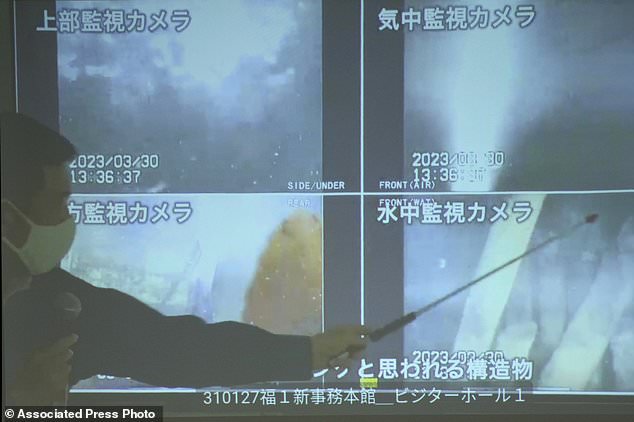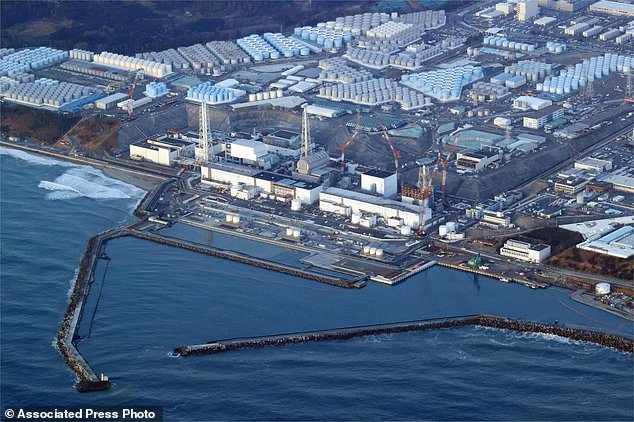"A nuclear reactor has been taken “offline” after a fault was discovered, its operator EDF has said.
Hartlepool power station’s Reactor 2 was shut down after an “electrical system fault” was identified “over the weekend”.
Residents should not see an impact to their electricity supply, the energy giant said.
Its first reactor is still in operation. The affected unit is due to come back online later this week.
EDF said on Tuesday the 590-megawatt Reactor 2 had been manually shut down to allow for repairs.
The original cause of the unplanned outage was “an issue with a fuse”, a company spokesperson told the BBC.
The company said they did not anticipate any power loss to the thousands of nearby homes, as their power comes from the wider national grid.
A planned statutory outage of Reactor 2 is scheduled to take place in July 2023.
In September, the power station was told to make safety improvements following an inspection by the Office for Nuclear Regulation (ONR).*
At the time, French-owned EDF said it took the safety of its sites “very seriously” and said it would work to “bring the site into compliance”.
In March, EDF announced plans to extend the lives of the Hartlepool plant, keeping the site operational until early 2026.
About 730 full-time staff and contract workers work at the site, which was opened in 1983. It had been due to be decommissioned in 2024.": Hartlepool EDF nuclear reactor shut down after fault - BBC News
*Italics mine.
"TOKYO (AP) - Images captured by a robotic probe inside one of the three melted reactors at Japan’s wrecked Fukushima nuclear power plant showed exposed steel bars in the main supporting structure and parts of its thick external concrete wall missing, triggering concerns about its earthquake resistance in case of another major disaster.
The plant’s operator, Tokyo Electric Power Company Holdings, has been sending robotic probes inside the Unit 1 primary containment chamber since last year. The new findings released Tuesday were from the latest probe conducted at the end of March.
An underwater remotely operated vehicle named ROV-A2 was sent inside the Unit 1 pedestal, a supporting structure right under the core. It came back with images seen for the first time since an earthquake and tsunami crippled the plant 12 years ago. The area inside the pedestal is where traces of the melted fuel can most likely be found.
An approximately five-minute video - part of 39-hour-long images captured by the robot - showed that the 120-centimeter (3.9-foot) -thick concrete exterior of the pedestal was significantly damaged near its bottom, exposing the steel reinforcement inside.
TEPCO spokesperson Keisuke Matsuo told reporters Tuesday that the steel reinforcement is largely intact but the company plans to further analyze data and images over the next couple of months to find out if and how the reactor’s earthquake resistance can be improved.
The images of the exposed steel reinforcement have triggered concerns about the reactor’s safety.

A spokesperson of the Tokyo Electric Power Company Holdings (TEPCO) shows photos captured by a robotic probe inside one of the three melted reactors at the tsunami-wrecked Fukushima nuclear power plant, during a news conference at the TEPCO headquarters in Tokyo, Tuesday, April 4, 2023. Images captured by a robotic probe inside one of the three melted reactors at the tsunami-wrecked Fukushima nuclear power plant showed exposed steel bars in the main supporting structure and its thick external concrete wall largely missing near its bottom, triggering concerns about its earthquake resistance in case of another major disaster. (AP Photo/Shuji Kajiyama)
TRENDING

Nicola Sturgeon’s husband Peter Murrell ARRESTED
24.4k viewing now

Train passengers tell man who’s seat was taken to just look elsewhere
8.1k viewing now

EXCLUSIVE: Tom Parker of The Wanted died without writing a will
9.5k viewing now
About 880 tons of highly radioactive melted nuclear fuel remain inside the three reactors. Robotic probes have provided some information, but the status of the melted debris is still largely unknown. The amount is about 10 times the damaged fuel that was removed in the cleanup of the Three Mile Island nuclear plant in the United States after its 1979 partial core meltdown.
Fukushima Gov. Masao Uchibori urged TEPCO to “swiftly evaluate levels of earthquake resistance and provide information in a way prefectural residents can easily understand and relieve concern of the residents and people around the country.”
The video taken by the robot also showed equipment that slipped down as well as other types of debris, possibly nuclear fuel that fell from the core and hardened, piling up as high as 40-50 centimeters (1.3-1.6 feet) from the bottom of the primary containment chamber, Matsuo said. The pile is lower than the mounds seen in images taken in previous internal probes at two other reactors, suggesting that the meltdowns in each reactor may have progressed differently, company officials said.
Matsuo said the data collected from the latest probe will help experts come up with methods of removing the debris and analyze the 2011 meltdowns. TEPCO also plans to use the data to create a three-dimensional map of melted fuel and debris details, which would take about a year.
Based on data collected from earlier probes and simulations, experts have said most of the melted fuel inside Unit 1 fell to the bottom of the primary containment chamber, but some might have even fallen through into the concrete foundation - a situation that makes the already daunting task of decommissioning extremely difficult.
Trial removal of melted debris is expected to begin in Unit 2 later this year after a nearly two-year delay. Spent fuel removal from the Unit 1 reactor’s cooling pool is to start in 2027 after a 10-year delay. Once all the spent fuel is removed from the pools, the focus is to turn in 2031 to taking melted debris out of the reactors.

A spokesperson of the Tokyo Electric Power Company Holdings (TEPCO) shows photos captured by a robotic probe inside one of the three melted reactors at the tsunami-wrecked Fukushima nuclear power plant, during a news conference at the TEPCO headquarters in Tokyo, Tuesday, April 4, 2023. Those robotic images showed exposed steel bars in the main supporting structure and its thick external concrete wall largely missing near its bottom, triggering concerns about its earthquake resistance in case of another major disaster. (AP Photo/Shuji Kajiyama)

FILE - This aerial photo shows the Fukushima Daiichi nuclear power plant in Okuma town, Fukushima prefecture, north of Tokyo, on March 17, 2022. Images captured by a robotic probe inside one of the three melted reactors at the tsunami-wrecked Fukushima nuclear power plant were revealed at a news conference at the plant’s operator, Tokyo Electric Power Company Holdings, Tuesday, April 4, 2023, showing exposed steel bars in the main supporting structure and its thick external concrete wall largely missing near its bottom, triggering concerns about its earthquake resistance in case of another major disaster. (Shohei Miyano/Kyodo News via AP, File)": https://www.dailymail.co.uk/wires/ap/article-11937585/New-images-inside-Fukushima-reactor-spark-safety-worry.html
"TOKYO (Kyodo) – The internal wall of a cylindrical foundation supporting the reactor pressure vessel of the No. 1 unit of the crippled Fukushima Daiichi nuclear power plant may be badly damaged across its entire circumference, its operator said Tuesday.
Some of the damage was revealed in videos taken during a survey of the No. 1 unit’s containment vessel by operator Tokyo Electric Power Company Holdings Inc., which said it would further analyze the footage and assess the seismic resistance of the pedestal.
The survey, conducted from March 28 through March 31 using an underwater robot, found the concrete wall missing in over half of the pedestal measuring 5 meters in internal diameter, leaving the reinforcing bar exposed.
Limitations to the robot’s cable length made it impossible to reach and take photographs of further parts of the foundation, but TEPCO said its entire circumference was highly likely to be damaged.
It is not clear how far the damage, which was around 1 meter high, had penetrated in the approximately 1.2-meter thick wall.
Footage taken by pointing the camera upward from within the pedestal showed control rods and other parts attached to the bottom of the pressure vessel deformed and covered with sediment.
TEPCO is considering running additional surveys on areas that could not be photographed in the latest survey, which was conducted in preparation for the removal of radioactive fuel debris from the No. 1 reactor’s containment vessel.
After a massive earthquake and tsunami struck northeastern Japan on March 11, 2011, the Fukushima Daiichi plant lost power and the ability to cool its reactors. The Nos. 1 to 3 reactors suffered core meltdowns, and the buildings of No. 1, 3 and 4 units were severely damaged by hydrogen explosions.": https://mainichi.jp/english/articles/20230404/p2g/00m/0bu/040000c